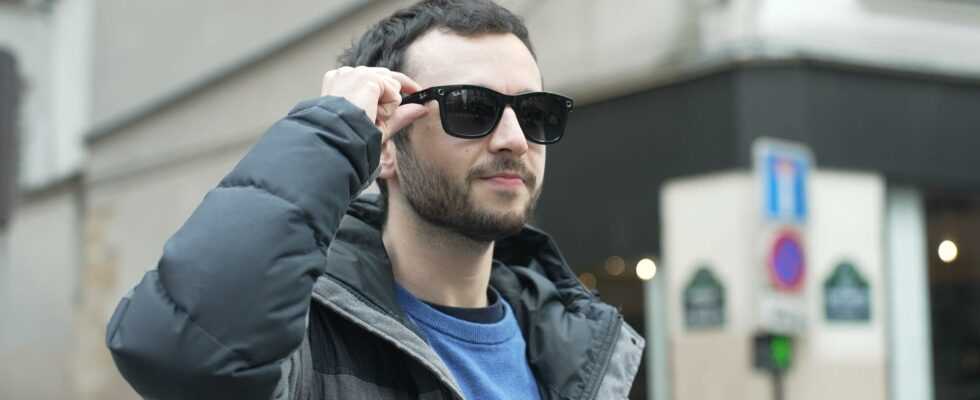For 329 euros, Ray-Ban offers sunglasses equipped with microphones, speakers, cameras and Bluetooth connectivity. Everything is designed in collaboration with Facebook, which has been dreaming of “smartphoneizing” glasses for several years. We tried the Ray-Ban Stories for several weeks.
Will glasses one day replace the smartphone? While waiting to be able to make this dream come true, the big tech companies are already trying to make good connected accessories out of them. After Snapchat and Bose, the turn of Meta, Facebook’s parent company, to enter the smart glasses sector. The Ray-Ban Stories, designed in partnership with the manufacturer of the same name, mark Facebook’s first step into this sector. What are they for ? Are they really cool? For several weeks, we wore a pair every day. Here are our conclusions.
What are Ray-Ban Stories for?
In April 2022, at the time of the release of this test, the Ray-Ban Stories are undoubtedly the most successful connected glasses on the market. They take the two concepts seen to date (Snapchat camera glasses, Bose headset glasses) and merge them. So we have sunglasses that look like sunglasses (it’s normal, Ray-Ban has simply integrated Facebook’s technology into classic frames, the Wayfarers here), but with sensors everywhere.
The Ray-Ban Stories serve many purposes:
- It is above all about sunglasses, with quality glass. This is not a detail, because the glasses of Snapchat or Bose were not very protective.
- The speakers at the end of the branches allow you to listen to music or make calls. The glasses connect like Bluetooth headphones to your smartphone or computer.
- Microphones allow you to call or initiate the voice command (which we will discuss later) using the “Hey Facebook” command.
- A button on the right branch allows you to take a photo or start a 30-second video recording, in square format. You then retrieve everything on your smartphone, thanks to the Facebook View application.
- Also on the right branch, there is a touchpad. You can pause content with a tap, change songs with two or three taps, or adjust the volume with a swipe.
The app FacebookView, available on iOS and Android, allows you to synchronize recorded content using Wi-Fi Direct (the glasses become an access point, the smartphone connects to it). The application then allows you to quickly share content on social networks (hence the “Stories”, do you have it?) or to create quick montages, thanks to an integrated editor. You can also link your Facebook Messenger account, but we’ll tell you about that in a few moments.
Rather stylish glasses
The promise is enticing, what about the reality? There are several points to criticize here, we will answer them one by one.
audio
Let’s start with the part audio, the one we use the most on a daily basis. In this category, there is always a dose of subjectivity. Since the glasses don’t use bone conduction technology, you have to make do with a little crackling speakers that send sound to your ears and the outside world (people around can hear if it’s very loud). In a quiet environment, it’s not bad, while being far from suitable for audiophiles.
In a noisy environment, it’s a real hubbub. The glasses manage sound variations quite badly and often require raising or lowering the sound manually. We’re not big fans of it, but to listen to the radio on a bike in the morning (not too loud of course, you have to watch the road), it’s quite satisfactory. At home or on the beach, on the other hand, we will always prefer headphones.
The microphones
The observation is the same for microphones, Facebook offers something much less successful than AirPods. Where you can easily call with wireless headphones, you often have to repeat your sentence with the Ray-Ban Stories. As soon as there are people around, abandon the telephone option. Only funny thing, people who understand that you phone with the glasses all find that ” very cool “. Failing to be a good hands-free kit, the Ray-Ban Stories are great kéké glasses.
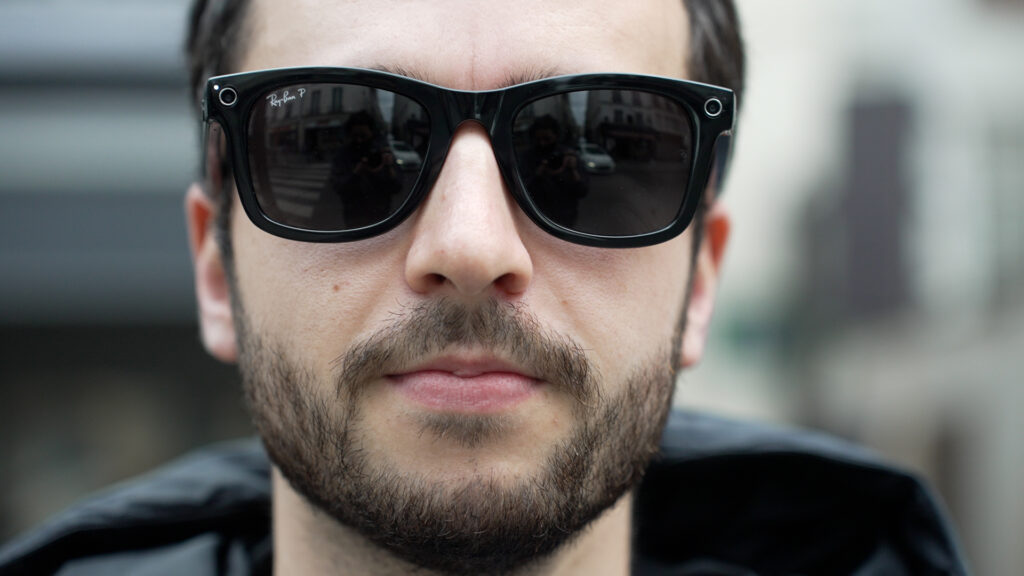
The camera
Finally, let’s discuss the camera aspect. There are two 5 Mpix sensors on the Ray-Ban Stories, although we don’t really understand why Facebook needed to put two cameras (beyond the aesthetic aspect.)
When the button is held down for 3 seconds, the glasses take a photo. When pressed once, it starts a 30-second video recording. If you press before the end of the 30 seconds, the video stops. It is impossible to go beyond that and it is very frustrating. Another annoying thing: the videos are always in square format. A bit of a shame for a product called “Stories”, which we expect to be more vertical.
However, and you can certainly see it in the excerpt posted above, the quality of the recordings is remarkable for connected glasses. The stabilization is close to perfection, which makes it possible to film a car or bicycle trip without any problem. The feat of the Ray-Ban Stories lies here: the photo/video part is really successful. The quality is logically less good at night, the microphones are trapped by the wind, but the image is not at all messy. Congratulations to the Meta engineers for this technical feat.
Regarding the application FacebookView, okay. Importing videos is fast but the processing afterward is long (it takes 30-40 seconds to open an imported video), the settings are unclear, and the built-in video editor is poorly designed. You can only select small bits, you can’t see the content of a video before adding it to the edit and the choice of music is too limited. The best is to import the videos into another software, such as iMovie on iPhone.
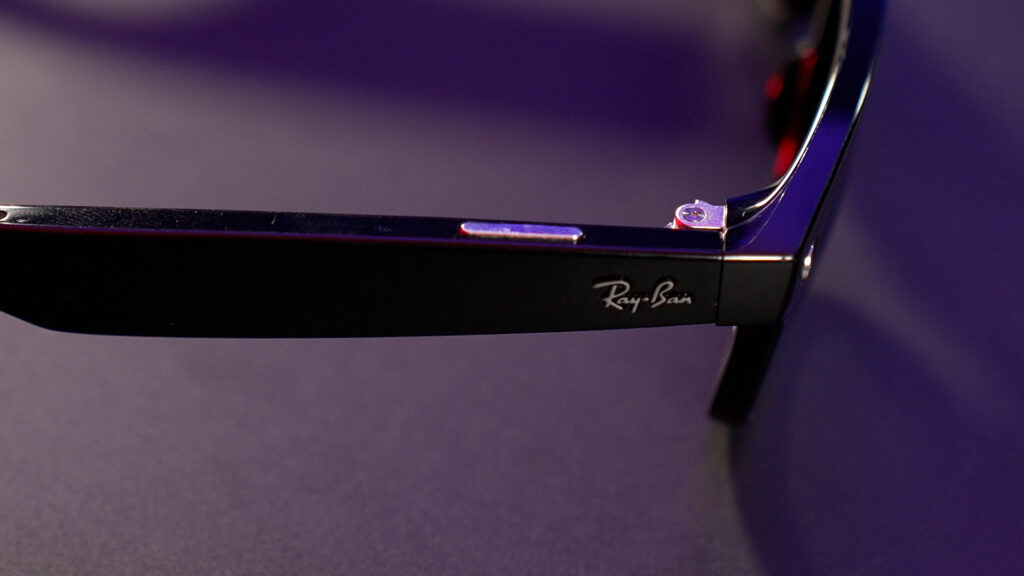
“Hey Facebook”, a not very smart smart assistant
The other interesting aspect of these Ray-Ban Stories lies in its ability to react to voice commands, but Facebook’s approach leaves us skeptical. Instead of integrating Google Assistant or Amazon Alexa, as most connected objects do, the social network has opted for… “Hey Facebook”, a new voice assistant. The latter speaks French but does not know how to do a lot of things. Don’t expect to ask him the time or send a message, he just “play”, “pause” and “take a picture”. His comprehension ability is very weak and makes Facebook’s smart glasses not very smart. It’s a shame, there was a very futuristic side to the idea of talking to his glasses.
Another too limited implementation, the Ray-Ban Stories integrate Facebook Messenger, but not WhatsApp or Instagram. You can link your Messenger account to the glasses and receive an alert “You have received a new message from John Doe” on every notification, but that’s it. There are other limitations, such as the fact that these alerts only work in English. Second limit, they are super relous. The glasses repeat in a loop that a notification has arrived and do not know how to stop. We quickly deactivated the function.
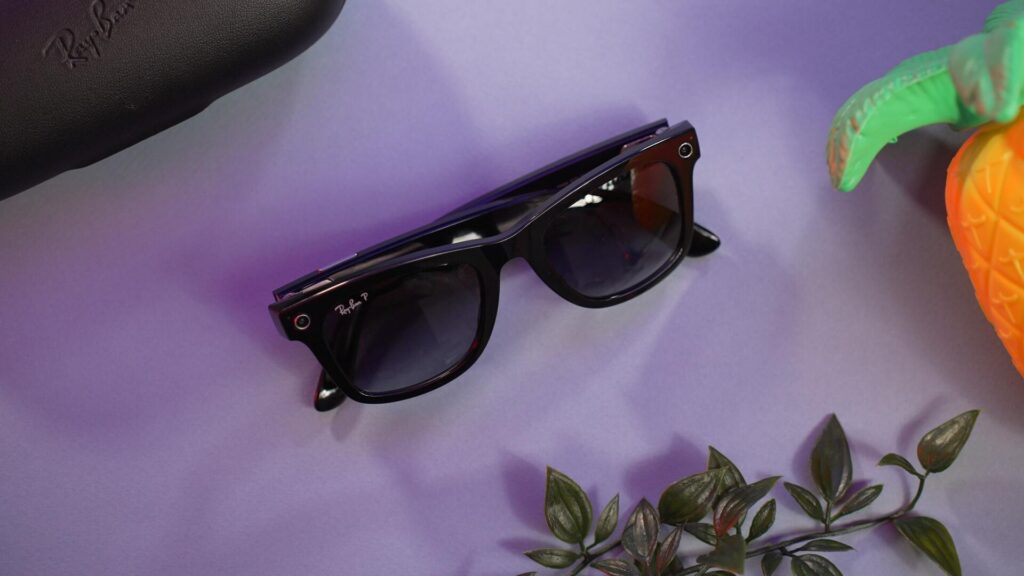
Big questions about privacy
Finally, how not to conclude this test with something other than privacy? Hint: Facebook. You did not understand ? Clues: Cambridge Analytica, data collection, advertisements, facial recognition… Mark Zuckerberg’s company, which has been particularly criticized in this area, does not have a very good reputation. Do we want to wear cameras and a Facebook microphone on our heads?
Of course, Meta is aware of these reservations. Several safeguards have been put in place, such as the presence of a physical switch to cut off the power supply to the glasses. When they are OFF, they do nothing but protect you from the sun. Another limitation: recording blocked at 30 seconds is not insignificant. Facebook doesn’t want you to be filming all the time and, in the same vein, has blocked the ability to stream live video or make video calls with the glasses, which would have been very cool. Let’s say that this limitation seems to us for a good cause.
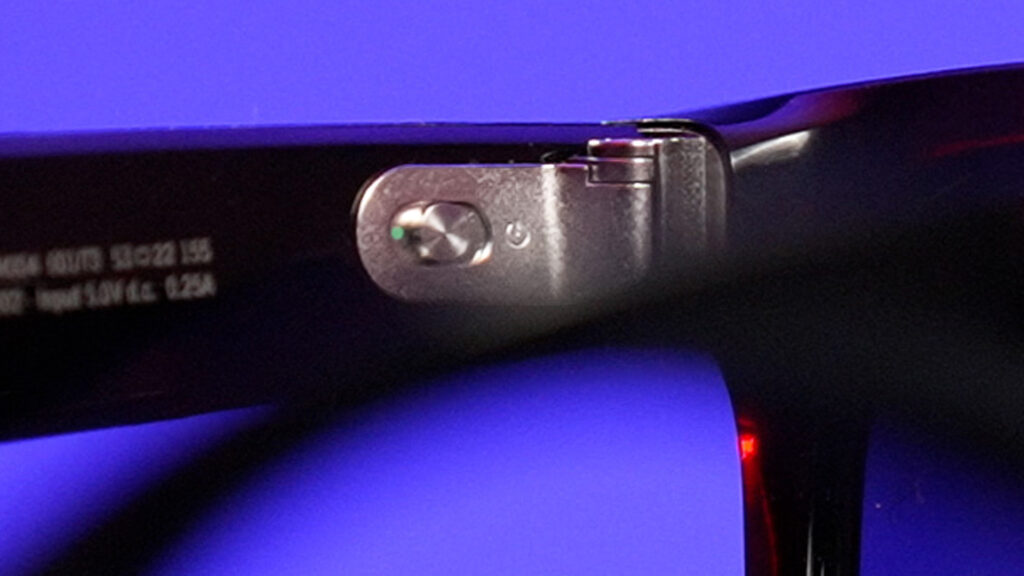
Finally, and this is perhaps the most problematic point, the glasses turn on a light point next to the camera when filming. Unfortunately, this point is tiny, is not noticed by anyone (we filmed many people without their knowledge, none noticed anything) and can be hidden by a tiny piece of tape. It’s so good. Do we want to be filmed by anyone, so easily? Ethically, this raises many questions.
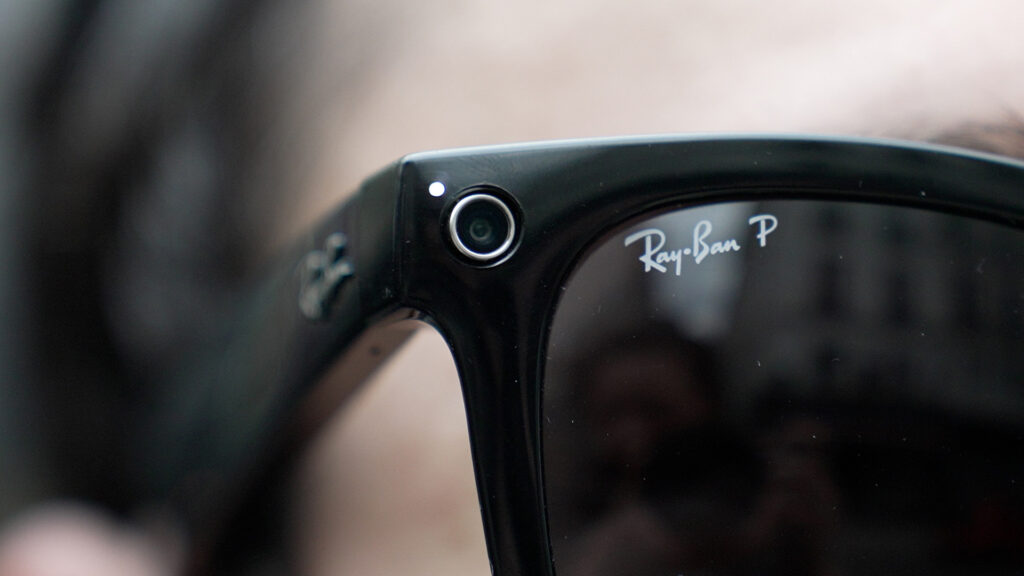
Despite these many criticisms, we liked the Ray-Ban Stories. At a high price (329 euros), but not crazy for Ray-Ban glasses (about 150 euros for the basic model), they do a lot of things right and make sunglasses more modern. We want to keep wearing them. However, we really wonder about the excesses of such products. How long will it be before someone uses them for malicious purposes? We could say that of all devices, but the risk seems higher than usual here.
